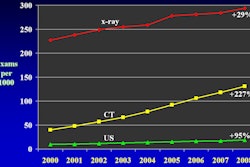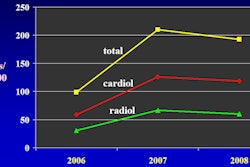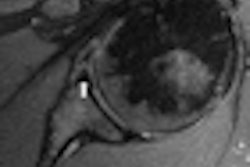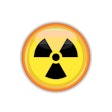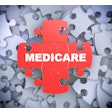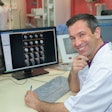Dear AuntMinnie Member,
A new study released this week indicates that the Medicare system is now paying more in aggregate for imaging studies performed by nonradiologists than it does for imaging conducted by radiologists.
The shift actually occurred several years ago, but it indicates the degree to which imaging technology has permeated throughout healthcare -- and also the difficulty that the U.S. government faces in trying to get a hold on rising imaging expenses.
Medicare reimbursement to nonradiologists for imaging also outstripped payments to radiologists over the study's 10-year period, although both radiologists and nonradiologists alike took a hit from the Deficit Reduction Act of 2005. Get more details in our Imaging Leaders Digital Community, or just click here.
Study tracks kids' exposure
In other news, a study released on Monday sheds more light on just how often children are exposed to ionizing radiation from medical imaging studies.
A team led by researchers from the University of Michigan studied a population of more than 350,000 children in five U.S. metropolitan areas. They found that more than 400,000 imaging studies were performed in three years, according to an article in our CT Digital Community.
What's more, they found that the average child in the study population was expected to receive about seven imaging studies by the time he or she reaches 18 years of age. Get the rest of the story by clicking here.
In more CT news, a study presented at the RSNA meeting last month indicates that radiation dose can be cut in dual-energy CT myocardial perfusion imaging studies by using a two-phase study protocol rather than the standard three-phase exam.
The new protocol acquires images only during stress and delayed-enhancement phases, eliminating image acquisition during the rest phase -- and cutting radiation dose by one-third in the process. Find out how they did it by clicking here, or visit the CT Digital Community at ct.auntminnie.com.





